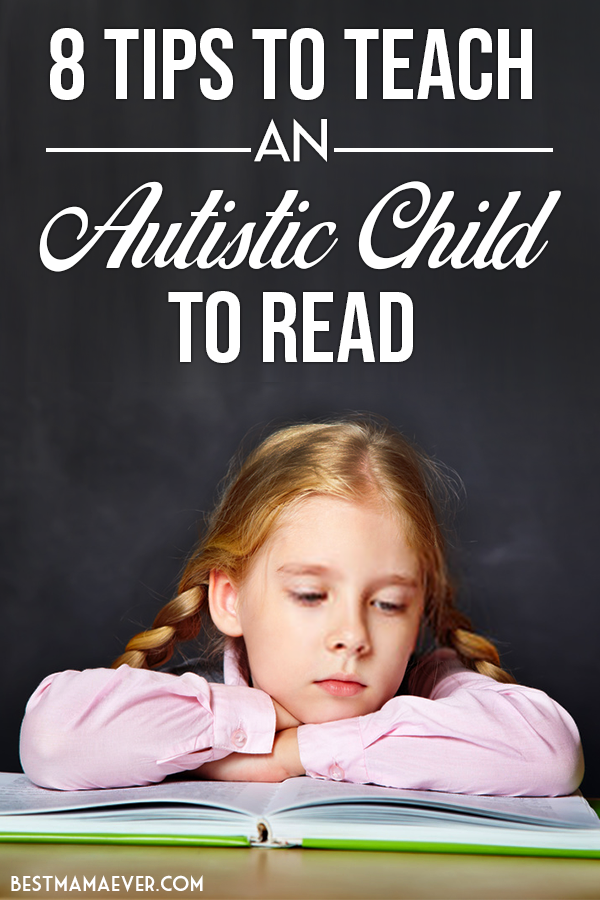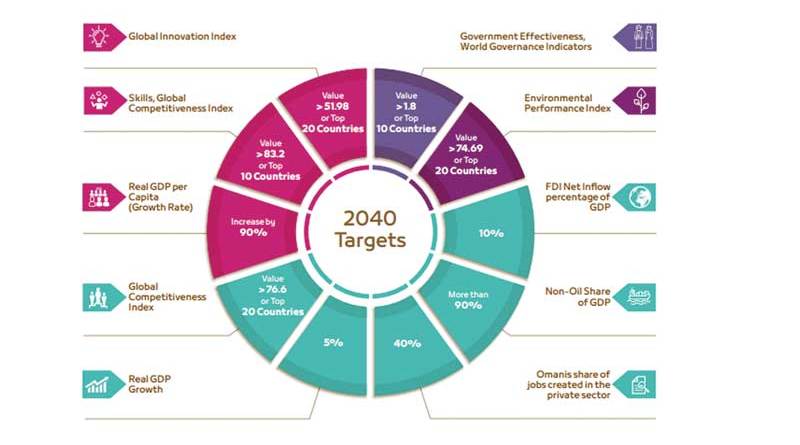How to create a secure attachment with your child
Building a Secure Attachment with your Baby
How to focus Mom’s Attention on Building a Secure AttachmentAs a postpartum home visitor for a local non-profit, I provide a series of three visits for all moms who are discharged from the hospital with their newborn. I never know what I’ll find when I visit a home with a baby less than 7 days old. Some Moms are calm and relaxed; others have anxiety about doing everything right. Some Moms may be concerned about how well their baby is feeding or recovering from a difficult birth. I have received feedback from many of these moms about why my visits were so helpful in the first thirty days after they give birth. Here’s what I’ve found.
After calmly taking an inventory of their questions and concerns, I sit and take a few deep breaths and observe Mom and her baby, as well as her support system that may (or may not) be present. I find at least one specific thing to make a positive comment on; “Your baby is very calm in your arms. ” “You really want to know what’s best for your baby.” “You have written down your questions so you can get more information.” “Your husband is here with you to make sure you feel better.” You’ll see her gaining trust in you and feeling a bit of relief.
Then, I mention several things on this list as it pertains to improving feedings, improving sleep, and the benefits of a secure attachment with her baby.
What is a secure attachment?You are the most important person to your baby. Your baby’s brain will develop rapidly in the first two years and continue to develop throughout life. Your child’s relationship with you is one thing that impacts the way s/he develops. In a loving, safe relationship with you, your baby experiences important brain activity. Additionally, from these positive early life experiences, your child will have an eagerness to explore, healthy coping skills, and feelings of both trust and empathy for others.
Your baby needs you to protect her, feed her, and comfort her. Newborns feel safe and secure when they are in your arms or held close to your body in a loving way. Most parents and babies relax more when there is comfort, connection, and security.
Newborns feel safe and secure when they are in your arms or held close to your body in a loving way. Most parents and babies relax more when there is comfort, connection, and security.
A secure attachment is when parents are capable of interpreting their baby’s language (cues, movements, behavior, and eventually words) and can respond with compassion. Of course, no parent is perfect, but a focused effort to meet your baby’s needs will have long lasting effects.
How do I create a secure attachment with my baby?- Hold and cuddle your baby. Touch is reassuring to your baby and provides a feeling of safety. Skin to skin helps both parents and baby feel calm and relaxed.
- Make eye contact. Gaze into your baby’s eyes when feeding, playing, and changing diapers; share facial expressions of joy and excitement.
- Watch and listen to your baby. Try to notice her early cues such as back arching, hand sucking, and grunting so you can quickly meet her needs and avoid excessive crying.

- Comfort your baby every time she cries. When your baby cries, it is a signal that she needs you for food, comfort, or reassurance.
- Speak in a warm, soothing tone of voice. Connect with your baby by smiling, singing, storytelling, or talking in a sweet, comforting voice.
- Maintain realistic expectations of your baby. Your baby cannot soothe himself or verbally tell you his needs until he is older than one year. Until then, he will completely rely on you to help him.
- Practice being fully present. Give your baby your full attention periodically throughout the day. This may mean being free of distractions such as cell phones and television.
- Practice being self-aware. Notice when you are tired, anxious, angry, or frustrated, and take care of yourself. You are better able to meet your baby’s needs when you are aware of your own needs.
Notice how your baby already has ways of communicating with you. Babies have “cues” to let you know what they need. The more you can tune into your baby’s cues, the easier it is to meet his needs.
Babies have “cues” to let you know what they need. The more you can tune into your baby’s cues, the easier it is to meet his needs.
For example: How do you know when your baby is hungry? Tired? Uncomfortable? Wants to be held? You can help Mom realize she’s already been interpreting cues and knows a lot about what her baby needs.
Responding with Compassion- Touch: Newborns love gentle touch, rocking, cuddling, and comfort.
- Skin to skin: Lay baby on your bare chest with just her diaper on.
- She is able to regulate her breathing and temperature, which allow her to sleep for longer periods of time.
- Infant massage: When using lotion or oil gently rub her arms, legs, belly, back, and chest.
- Wear your baby: Put your baby in a carrier and keep her close.
- Talk, sing, and read to your baby: When he hears your voice, it is soothing and comforting.
- Important early brain development that impacts your baby’s ability to learn
- Parents develops an awareness to their baby’s needs (such as sleep, food, and play)
- The baby develops trust in his parents
- The baby is eager to learn, explore, and experience the world around him
- Parents experience more self-confidence and emotional regulation
Often you’ll have Moms tell you this feels right to them. Their intuition as a Mother may be telling her to do all these things already, but she may be confused as relatives may say, “You’ll spoil your baby!” Help increase her confidence; she knows what’s best for her baby. She’ll feel better about herself and when her partner also hears about secure attachment, he’ll be more supportive and involved in developing his own attachment with the baby.
Their intuition as a Mother may be telling her to do all these things already, but she may be confused as relatives may say, “You’ll spoil your baby!” Help increase her confidence; she knows what’s best for her baby. She’ll feel better about herself and when her partner also hears about secure attachment, he’ll be more supportive and involved in developing his own attachment with the baby.
Abby BordnerCLD, CPD, CLE®, ICCE, Labor Doula FacultyAbby Bordner started her career in Women’s Health. She began at Planned Parenthood in Portland, OR where she was trained as a health counselor for contraception and HIV/AIDS. She had her first child in 1999, when she began her interest in birth work. She pursued her doula certification, shortly after became a childbirth educator and eventually a lactation educator, as well. She teaches many educational workshops related to birth and parenting. She started an online parent education and personal support coaching business called Relationship Based Parenting. |
Copyright CAPPA 2015
How to Cultivate a Secure Attachment with Your Child
Scroll To TopA new book suggests that parents can raise healthier and happier children by providing a balance of support and freedom.
By Diana Divecha | February 3, 2017A preschooler waits for his mother’s reassuring smile before joining other children on the jungle gym. A one-year-old calms instantly when her dad lifts her onto his lap, even though he’s talking on the phone. An older child manages his stage fright when he sees his mom in the audience nodding in empathy and support.
As fleeting as these micro-gestures are, each of them telegraphs a secure attachment—a special, trusting emotional bond—between a child and his or her caregiver. This kind of relationship is key to healthy development, say psychotherapists Kent Hoffman, Glen Cooper, and Bert Powell. In their new book, Raising a Secure Child: How Circle of Security Parenting Can Help You Nurture Your Child’s Attachment, Emotional Resilience, and Freedom to Explore, the authors guide parents toward creating this kind of enduring bond with their children.
The Guilford Press, 2017, 280 pages
Parenting for a secure attachment has two themes: 1) providing comfort when needed and 2) offering the freedom to explore when desired. It’s a simple concept, but one that can be complex to manifest in the rush of everyday life. That’s why a book like this can be a crucial tool for parents.
Advertisement XMeet the Greater Good Toolkit
From the GGSC to your bookshelf: 30 science-backed tools for well-being.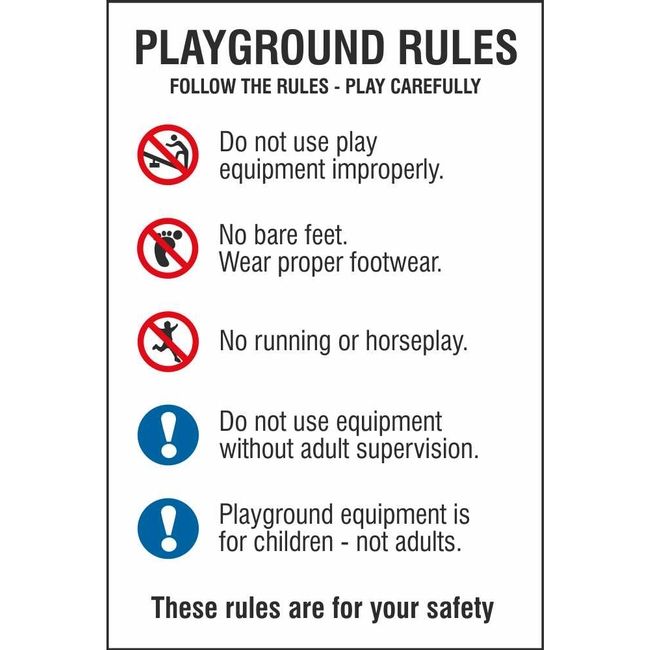
Research over many decades has shown that a secure relationship is the most important foundation of effective parenting. Children who have secure attachments tend to be happier, kinder, more socially competent, and more trusting of others, and they have better relations with parents, siblings, and friends. They do better in school, stay physically healthier, and create more fulfilling relationships as adults.
Unfortunately, there is confusion in the popular media about what a secure attachment is and how to foster it. This is partly because scientists have done a poor job at communicating the idea beyond the walls of academe. Additionally, the term “attachment parenting” has been co-opted by a philosophical movement that promotes parenting practices (such as natural childbirth, breastfeeding, and co-sleeping) that have not proven to be related to a secure attachment. For these reasons, Raising a Secure Child is a much-needed course correction.
What secure attachment looks like
As the authors describe it, a secure attachment is a “confidence and trust in the goodness of me, you, us” that a person carries throughout their daily life. It is the sense of being loved and supported no matter what happens. And when children feel secure, a world of possibilities opens up.
It is the sense of being loved and supported no matter what happens. And when children feel secure, a world of possibilities opens up.
Hoffman, Cooper, and Powell distill the wisdom of attachment theory into an accessible and practical approach called the Circle of Security. The circle represents the ebb and flow of how babies and young children need their caregivers—at times coming close for care and comfort, and at other times following their inspiration to explore the world around them. The caregivers’ role is to tune in to where on the circle their child is at the moment and act accordingly.
Drawing on 30 years of working with children and families, the authors show how parents may feel discomfort or have difficulties with various parts of the circle. These difficulties arise from parents’ own childhood experiences and attachment styles, and, unfortunately, they can interfere with the formation of a secure attachment.
For example, a parent may rebuff a toddler’s need for comfort, believing that doing so will make the child more independent.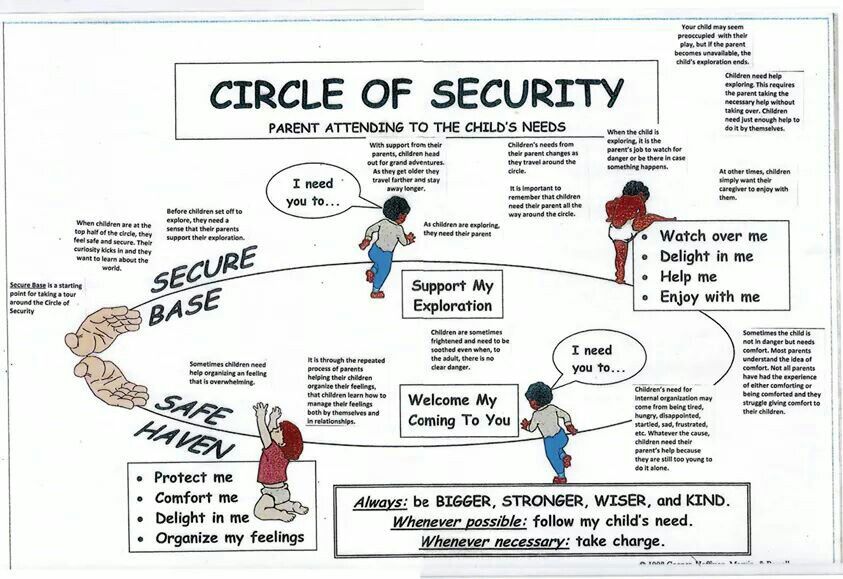 But decades of research show that children need to feel secure in their relationships before they can develop authentic autonomy. Another parent may have difficulty with the exploration phase, fearing for their child’s safety. If they convey this anxiety to the child, they can send the message that the world is not safe or, worse, that the child isn’t competent. These children can become overly dependent on their parents.
But decades of research show that children need to feel secure in their relationships before they can develop authentic autonomy. Another parent may have difficulty with the exploration phase, fearing for their child’s safety. If they convey this anxiety to the child, they can send the message that the world is not safe or, worse, that the child isn’t competent. These children can become overly dependent on their parents.
Through their kind and compassionate writing style, the authors model the tone they ask parents to take with their children. They do not prescribe specific parenting behaviors but rather ask parents to pay attention to their own emotions and what they communicate to their children:
The youngest babies can sense ease versus impatience, delight versus resentment or irritation, comfort versus restlessness, genuine versus pretending, or other positive versus negative responses in a parent when these reactions aren’t evident to a casual observer. Little babies may pick up on the smallest sigh, the subtlest shift in tone of voice, a certain glance, or some type of body language and know the parent is genuinely comfortable or definitely not pleased.

No one can be attuned to another person at all times, though. In fact, the authors assert that the myth of “complete availability” actually undermines a child’s development. Ruptures, small and large, happen all the time in the fabric of human relationships, and so it becomes important that repairs, small and large, become second nature to parents. Caregivers may be relieved to know that children are not keeping a parenting score, but rather assessing whether the relationship is safe and secure overall. Good enough is truly good enough.
Parenting for a secure attachment helps parents to let go of any pressures they feel to constantly prepare their child for the future, which can inadvertently fill children with anxiety. Instead, it requires “being with” or cultivating sensitivity to what children are feeling at the moment and helping them label, understand, and manage their feelings…or simply sitting still and waiting with kindness and understanding they have their feelings. As psychiatrist Dan Siegel says, “feeling felt” is one of the most important needs children have.
As psychiatrist Dan Siegel says, “feeling felt” is one of the most important needs children have.
How to read this book
-
More on Attachment
Explore how to raise a securely attached child.
Learn how attachment style affects your romantic relationships.
Find out how to stop attachment insecurity from ruining your love life.
Discover why it’s important to know your partner’s attachment style.
Raising a Secure Child is neither a quick read nor a how-to, but instead invites thoughtful reflection from the reader. Some important points, however, are left undeveloped. For example, a short insert briefly acknowledges that babies’ temperaments matter, when developmental science has found baby temperament to be quite important.
Also, though the book is based on science, Raising a Secure Child lacks references. This leaves readers wondering which claims are based on research, clinical experience, or just sound conventional wisdom. And there are some near missteps: The reader has to look closely to see that the authors are claiming that parents and other adults, not just mothers in particular, can form secure attachments.
And there are some near missteps: The reader has to look closely to see that the authors are claiming that parents and other adults, not just mothers in particular, can form secure attachments.
Finally, wisps of outdated theories can be found in the book. For example, the authors present the psychoanalytic “object relations” idea that babies begin as “one” with the mother and have to “split” to form a sense of self. This theory is not supported in modern developmental cognitive science.
These minor flaws notwithstanding, Raising a Secure Child is one of the most important contributions to the parenting literature in years. It is a much-needed correction to the confusion of “attachment parenting,” and fills a gap by focusing on the elusive, ephemeral flow of emotions between children and the adults who care for them. The guidance is offered with an understated grace and poetry, as the authors soothe the parents’ own attachment history to ease their relationship with their children.
I imagine that any parent’s nervous system will calm when reading that “every heart is still seeking the love it was born to know.”
Greater Good wants to know: Do you think this article will influence your opinions or behavior?
Submitting your rating
Get the science of a meaningful life delivered to your inbox.Submit
About the Author
You May Also Enjoy
Comments
How to Raise a Secure Attachment in a Child
How to Get Through Tough Times: Psy's Daily Advice
“I fell in love with a colleague who just decided to 'have fun' with me”
“I fell in love with a married boss.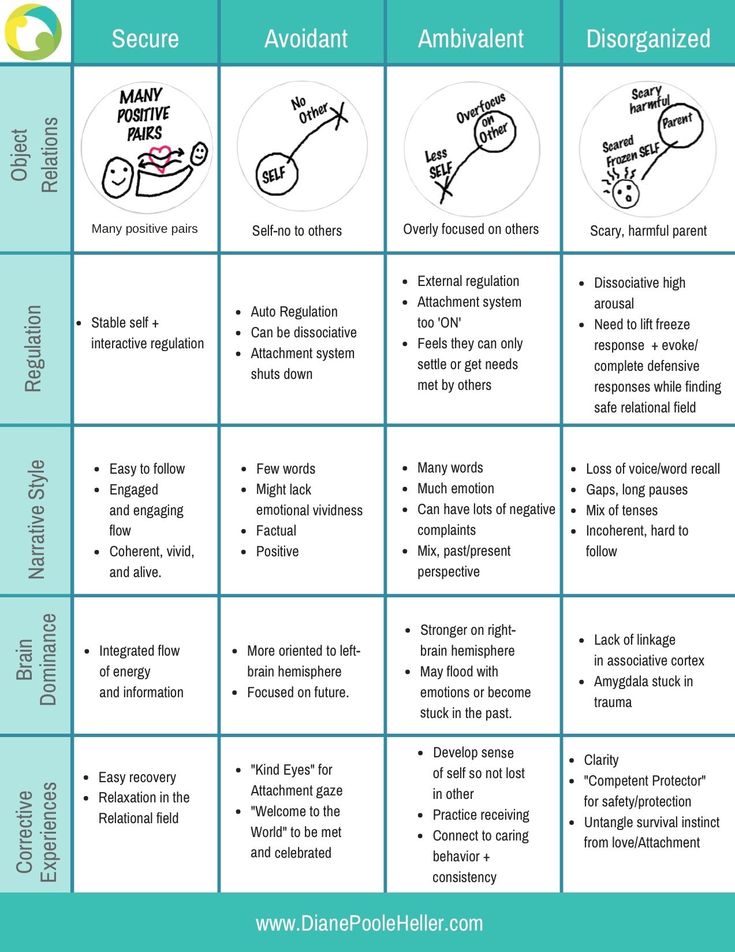 How to control feelings at work?
How to control feelings at work?
One of the important tasks of parents is to raise a child with a secure attachment style. If you can do this, he will confidently explore the world, knowing that he has someone to turn to for help.
A secure attachment style makes it easy to make acquaintances and create strong bonds. Carriers of this style are not afraid to seek support from objects of affection - parents, teachers and partners. These people are open to new things, because they are sure that their loved ones unconditionally accept them.
Here are some tips on how to develop a secure attachment style in your child.
1. Teach him to recognize and satisfy his needs. Help to understand when he is really tired or hungry.
2. Reassure your child that he can always get your attention when he is scared or wants to share thoughts, emotions or experiences. Emotional support is needed for a child not only in difficult times, the response to positive events and thoughts is also very important.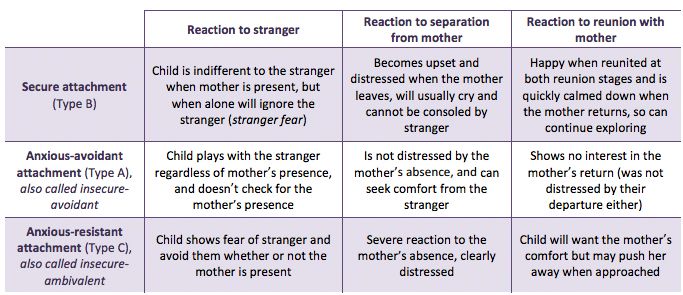
3. Use eye contact to support your child.
A child's need for parental attention varies with age and physical condition.
4. Do not pull the child away from you too abruptly. Observe how long it takes to be with you and how long he can go without you. For example, read a book for 10 minutes, then give him toys and cook dinner. After a while, when he demands your attention, pick him up, talk to him, play with him, and go about your business again. A child's need for parental attention varies with age and physical condition.
5. If you raised your voice to him or didn't notice him right away, ask his forgiveness. Apologizing is an integral part of a trusting relationship. Every parent makes mistakes sometimes. We need to realize this, correct mistakes and restore trust.
6. Do not try to slip out of the door unnoticed when the child has turned away. Be predictable. To reduce a child's anxiety, introduce rituals so that the child knows what to expect.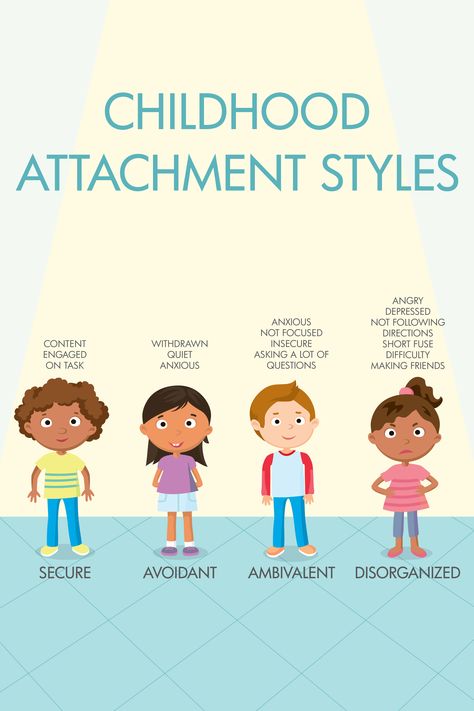 For example, you can come up with rituals for saying goodbye, greetings, and going to visit your grandmother.
For example, you can come up with rituals for saying goodbye, greetings, and going to visit your grandmother.
Do not try to convince yourself that if the child does not cry when you leave, then he is not worried. Each child has his own temperament and his own period of reaction to events. Try to accustom your baby to new people, places and events gradually.
Safe attachment style is an investment in the child's future
7. Many calm children hesitate to admit their anxiety. They may be afraid to ask the babysitter to take them to the toilet or to tell them about spilling milk. Talk to your child, repeat that he can come to you with any problem and you will help him cope with it. He needs to know that even if you are angry with him, you still love and support him.
8. Do not forget that the individual characteristics of the child affect his attitude to the world. Introverted and doubting children have a harder time trusting others.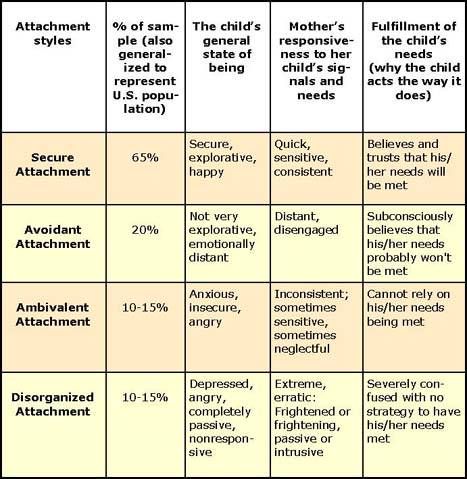 They need more parental attention and support.
They need more parental attention and support.
It is important to educate and educate the child and gradually, step by step, let him go free swimming. But at the same time, be ready to help at any time, regardless of how old the child is.
About the Author
Ellis Boyes is a psychologist and author of The Anxiety Toolkit, TarcherPerigee, 2015. Her website.
Text: Alexandra Galimova Photo Source: Getty Images
New on the site couple?
“An adult son lives at our expense, he spends all his money on girls. How can I help him grow up?
How to measure soul, trauma and stress: all about evidence-based psychotherapy
How not to become addicted to a smartphone: set reasonable limits for yourself
How to clean up the house: 5 simple rules - get rid of unnecessary things
“I want to be loved by a guy whom I myself do not love. What is the reason?"
How to create a reliable attachment with a baby under one year old
Today we will talk about the features of attachment in children under one year old.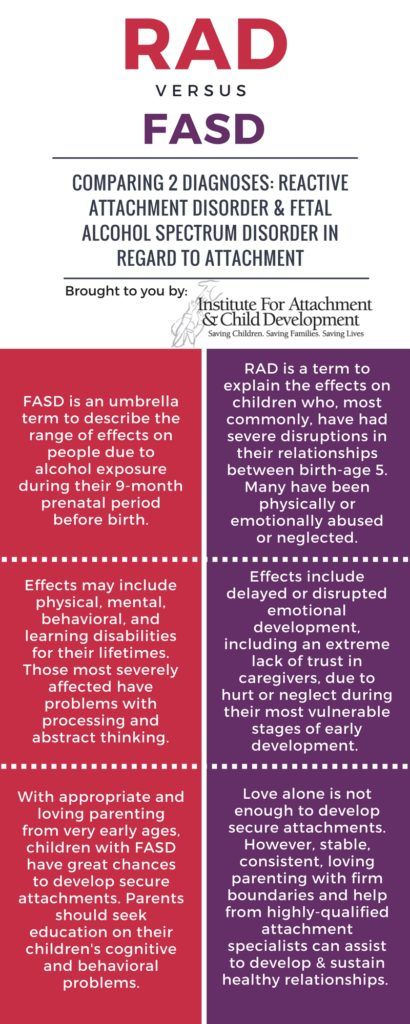 Why is this topic so important? Firstly, mothers with newborn children, especially if this is the first child, are very vulnerable. They receive a huge amount of new, often contradictory information, hear a lot of advice from all sides. These tips, in my opinion, bring the first months of motherhood closer in terms of complexity to flying into space or moving to another country. Therefore, I really want to give a woman tools that will help her understand what is happening with her baby, feel more confident in making decisions.
Why is this topic so important? Firstly, mothers with newborn children, especially if this is the first child, are very vulnerable. They receive a huge amount of new, often contradictory information, hear a lot of advice from all sides. These tips, in my opinion, bring the first months of motherhood closer in terms of complexity to flying into space or moving to another country. Therefore, I really want to give a woman tools that will help her understand what is happening with her baby, feel more confident in making decisions.
When we talk about attachment theory today, we are faced with a paradox: on the one hand, volumes of scientific literature have been written about attachment characteristic of young children, this type of attachment is the best studied (I'm talking now about works outside of Gordon's theory Neufeld, creator of the concept of attachment-based development). This topic has been traveled far and wide, the principles of attachment are formulated, how it affects the behavior of the child, his relationship with an adult.
But, on the other hand, in all the literature on the topic you will not find a mention that the classical theory of attachment, that is, the theory, which is considered to be the ancestor of the English psychoanalyst John Bowlby, describes a rather limited phenomenon, namely the ability to become attached through physical contact . I considered it important to show how classical attachment theory fits into Gordon Neufeld's model of attachment, where the human ability to attach begins and how it develops, that is, to put attachment in perspective.
To be close and stay in the leading position
Let's start with the main two theses around which my speech will be built.
1. A child under one year old feels affection through the senses.
There is no other way for a baby to feel connected and close. That is, he can see, hear, smell, touch, taste. Therefore, it is so important to be physically and emotionally next to him, and if you leave, then make sure that the child remains with the adult to whom he is attached. Children, especially young children, find separation difficult because of their deep need for affection.
Children, especially young children, find separation difficult because of their deep need for affection.
2. Attachment is organized hierarchically.
Attachment is a relationship between two people, and there is always a follower and a leader in them. In attachment there is one who gives and one who receives. In adult equal relationships, the hierarchy will change depending on who now has more psychological or physical resources, but in the relationship between an adult and a child, an adult should always take the position of a leading leader.
Often the idea of hierarchy in attachment causes misunderstanding, serves as a barrier in the perception of attachment theory. But this is a very important idea. Even in the most equal relationship, someone has more resources, and someone has less, so someone acts in the position of a guardian, giver, and someone in the position of taking care. Adults are the guarantor of the well-being of the child, they make sure that the needs of the child (not desires, but needs) are met.
What are the needs of a newborn? Physiological: eat, sleep and get rid of excess vital activity. If there is a hitch in this, then we begin to sound the alarm. And psychological needs - about them a little later. But in caring for these needs, it is important for the adult to remain in the lead.
Why does a person need attachment
Let's see what attachment is in the most general sense of the word. Attachment is the basic human need to feel connected to others, the ability to establish and maintain contact and intimacy. The desire for contact and closeness is inherent in a person as a social being throughout life. We come into this world with a need for relationships and we leave with it. There is nothing more terrible than being born alone or dying alone.
Relationships are the purpose and meaning of our lives. Relationships, the ability to feel contact and closeness, is how we are connected at the level of biology, that is, how we are arranged, whether we like it or not.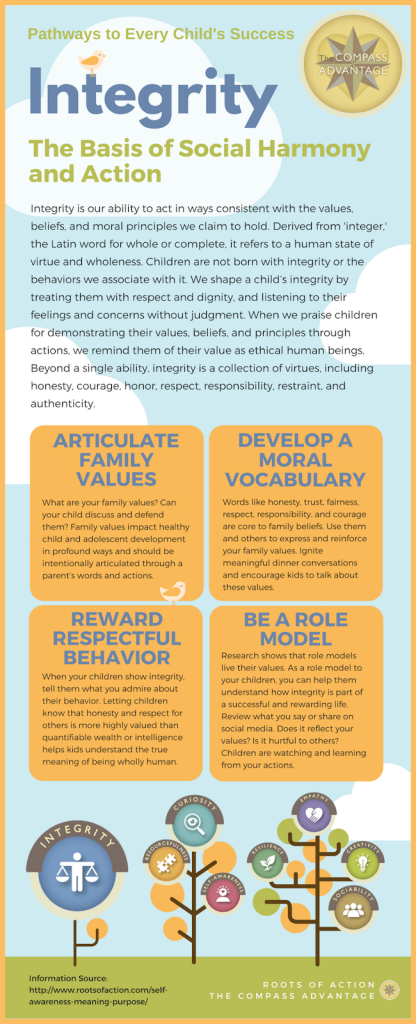 The need for contact and intimacy haunts us all the time. We can deny it, we can be protected from it by psychological barriers, we can repel this need, but we always have it.
The need for contact and intimacy haunts us all the time. We can deny it, we can be protected from it by psychological barriers, we can repel this need, but we always have it.
Why should a person seek attachment? It is a subconscious desire to be safe. Attachment equals security, survival. If this basic need is satisfied, then you can do something else.
For thousands of years, attachment ensured survival: if one of our ancestors met danger alone, then the chances of death were high; if he managed to call for help, to attract the attention of fellow tribesmen with whom he was on good terms, then it was possible to get help and survive. We are the descendants of those who managed to call for help and survive, who knew how to build personal ties. This is how evolution took place. Evolution has adapted our brains and bodies to the fact that the feeling of contact and closeness with people gives us a sense of security.
When a baby is born, more than 30 instincts are directed towards establishing contact and intimacy. We are already born with this task. The nervous system calms down next to its adult, the body relaxes, if we haven’t eaten for a long time, then the feeling of hunger or thirst makes itself felt, or fatigue rolls in, and the body falls asleep. The sense of security that attachment provides is a signal to the body that the basic conditions for survival have been met and other tasks can be done. What is the main purpose of attachment? Grow a harmonious and mature personality out of a child.
We are already born with this task. The nervous system calms down next to its adult, the body relaxes, if we haven’t eaten for a long time, then the feeling of hunger or thirst makes itself felt, or fatigue rolls in, and the body falls asleep. The sense of security that attachment provides is a signal to the body that the basic conditions for survival have been met and other tasks can be done. What is the main purpose of attachment? Grow a harmonious and mature personality out of a child.
Attached separation is counterproductive. Studies have been conducted that have shown: when the mother of a small child goes into another room, the baby’s blood pressure rises, breathing quickens, all physiological parameters are close to what a person experiences with a heart attack, the level of cortisol, the stress hormone, rises in the blood. If you imagine that one of your loved ones had an accident, then no matter what you are doing, you cannot think about anything other than what happened to your loved one, drop everything. When the danger has passed, you exhale and suddenly realize that you have not eaten anything all this time, but you do not feel hungry; you haven't slept, but you don't feel tired. You are surprised to find a large bruise on your body, but you do not remember where you hit. You greedily swallow the first food that comes your way and fall asleep because your attachment is now safe.
When the danger has passed, you exhale and suddenly realize that you have not eaten anything all this time, but you do not feel hungry; you haven't slept, but you don't feel tired. You are surprised to find a large bruise on your body, but you do not remember where you hit. You greedily swallow the first food that comes your way and fall asleep because your attachment is now safe.
Attachment is a psychological womb
In addition to providing a sense of security, attachment is also a psychological womb. While the child is in the womb, he is physically attached to his mother, and his successful development depends on the reliability of this attachment. Then the baby is born and becomes physiologically independent: he can eat, breathe, maintain a temperature balance, get rid of excess vital activity, but psychologically the child is born very immature.
In some mammals, the size of the brain is comparable to the size of the uterus of the female, and, therefore, the female is able to give birth to a smaller version of an adult animal with a practically developed brain, like an adult animal. Pregnancy in humans is 38-40 weeks, this is practically the limit of the possible. Even normal childbirth is fraught with many dangers and risks, so there is nowhere to pull. That is why our babies are born prematurely, and their brains are underdeveloped.
Pregnancy in humans is 38-40 weeks, this is practically the limit of the possible. Even normal childbirth is fraught with many dangers and risks, so there is nowhere to pull. That is why our babies are born prematurely, and their brains are underdeveloped.
The brain of a newborn at birth is formed by 25%. There is all the building material, but the connections in the brain are only a quarter formed, so our task is to create a psychological womb for the child, an invisible umbilical cord that will allow him to live and develop.
To understand the role of an adult in creating and maintaining the psychological womb, one can look at how development takes place in the physical womb. While the baby is inside the mother, the best thing we can do is to provide favorable conditions for the course of pregnancy, so that the child does not fight for existence in the womb, but directs its energy to development.
In the same way, when creating a psychological womb, the best thing we can do is to provide conditions.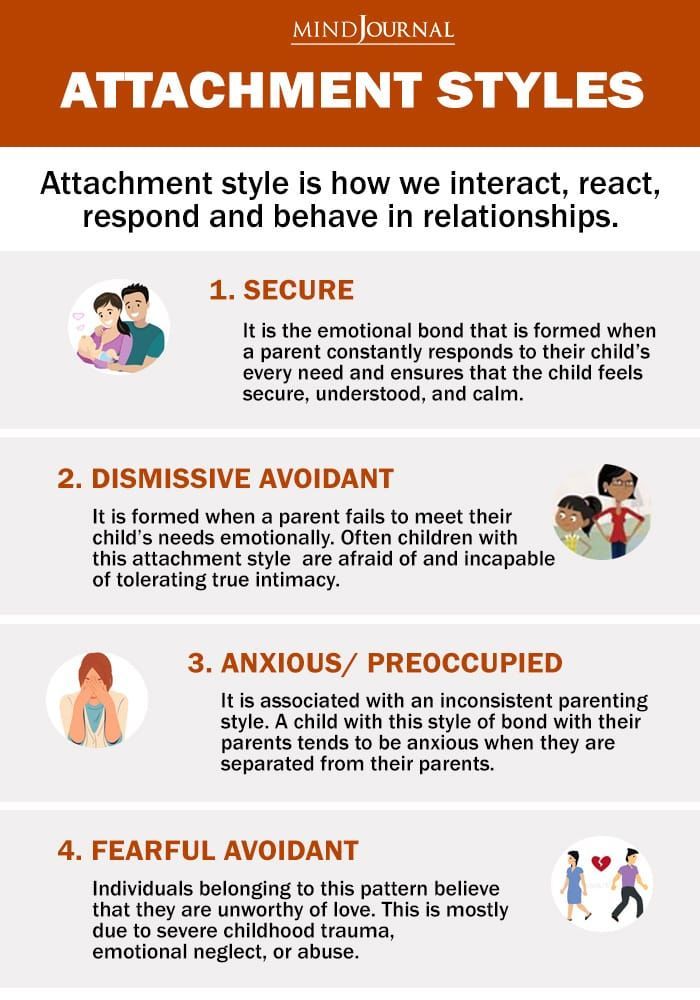 We cannot train a child to be himself, we cannot force him to grow up, this is the work of nature. But we can create and maintain a psychologically comfortable attachment for a child to us so that his brain can feed on intimacy, relax and begin to develop. That is, attachment is a psychological umbilical cord, with the support of which the child grows and develops, in order to then separate and enter the world of adults.
We cannot train a child to be himself, we cannot force him to grow up, this is the work of nature. But we can create and maintain a psychologically comfortable attachment for a child to us so that his brain can feed on intimacy, relax and begin to develop. That is, attachment is a psychological umbilical cord, with the support of which the child grows and develops, in order to then separate and enter the world of adults.
Contact through the senses
How does the womb expand to give room for personal development? A person is able to feel contact and closeness in a variety of ways. Attachment plays the role of a psychological womb for the child, but it involves more than just physical contact. A person is able to feel close to another, even if the other is absent, through:
- sensations;
- similarity;
- accessory;
- significance;
- love;
- knowledge.
If everything is good in the relationship, the mother is emotionally responsive and available, then every year the child will develop deeper and deeper ways to feel in touch with his significant adult.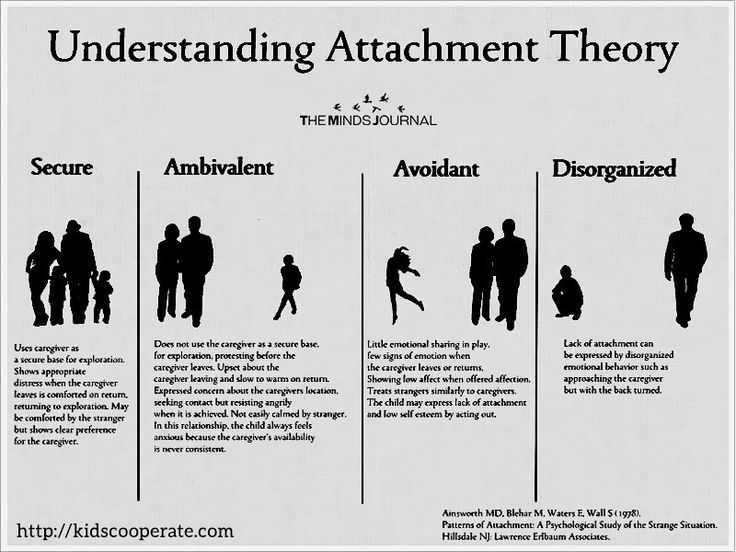 The ability to relate develops gradually, through 6 successive stages, when with each stage a new, more complex way of feeling connected and close is added to the previous way of attachment.
The ability to relate develops gradually, through 6 successive stages, when with each stage a new, more complex way of feeling connected and close is added to the previous way of attachment.
Today we will be interested in the upper, most shallow level - the ability to become attached through sensations. This is at the same time the most archaic way. Very rarely there is no attachment through sensations. Sensations occur in all mammals in one form or another.
Why are we interested in this level? Because a child up to a year feels closeness only through sensations, through the senses.
What does this mean for us? How can we keep a young child feeling secure, as uninterrupted as possible with us? Try to be present in the child's life in one way or another:
Rumor. If he does not see you, then let him hear you. You can record your voice on your phone and turn it on in your absence. If you leave the room, sing a song to your baby.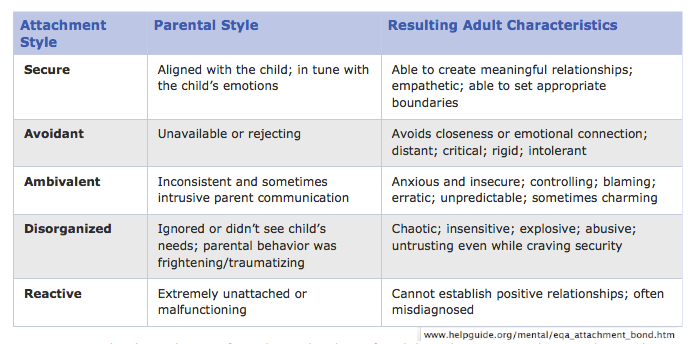
Smell. Why do children sleep better in their parents' bed, even if there are no parents in it? Because it smells like adults, which means it's safe there. The brain registers the presence of adults by smell.
The taste of milk will also help calm the baby.
How to use it in practice
We use these techniques to distract the baby. It must be understood that the child's brain, since it is in its infancy, is not able to process several signals at the same time, is not able to hold on to several thoughts and even sensations at the same time. The infant's brain processes one signal per unit of time, starting with the processing of one channel in one direction. A newborn, for example, cannot hear with both ears at the same time: it takes time for the brain to learn to process signals from both ears at the same time. Likewise with vision. Further, the brain develops, it learns to process several signals from different senses.
Knowing this peculiarity of brain development in an infant, one can use it to distract the child. For example, you bathe him, he feels good and warm. When he is left without water, he cries, because the temperature has changed, he has become cool, that is, his sensations have changed. Before you get him out of the bath, you need to switch his channel of attention from the skin to hearing or vision: we start singing a song, he is distracted. When we see that he is absorbed in what we are doing now, his perception switched to the auditory canal, then we calmly take him out of the water, and he does not cry, because his brain is not yet able to process the signals from the skin.
The same technique can be used when you take your baby for a walk or change his diaper. You can build faces, make some sounds. A new channel of information takes over the brain and pushes the previous channel into the background.
Not only mom
Thus, the baby's brain receives a signal that the mother is nearby only when it receives signals from the senses.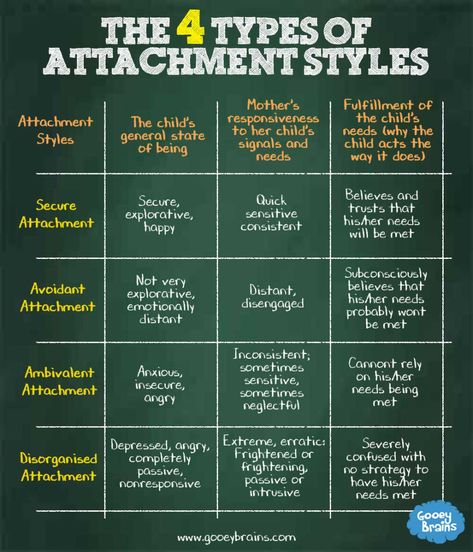 Knowing this, we can answer the question: in what case does the child's brain understand that the contact is lost? When a child does not see, does not hear, does not touch, does not smell, does not taste. That is why children sleep very badly in perfect silence. They sleep best when the voices of their relatives sound in the background, even if these are extraneous conversations recorded on the phone.
Knowing this, we can answer the question: in what case does the child's brain understand that the contact is lost? When a child does not see, does not hear, does not touch, does not smell, does not taste. That is why children sleep very badly in perfect silence. They sleep best when the voices of their relatives sound in the background, even if these are extraneous conversations recorded on the phone.
A small child cannot hold onto you with memory, cannot convince himself that his mother will be back soon. Babies do not have a conscious past and future: everything that happens to them in the moment seems to be forever for them. The child does not have back, background thoughts. To convince the child's brain that everything is in order, you need to let him "hold" for you through sensations. If the brain does not receive such a signal, then it is subjected to severe stress.
The mother can be replaced by another adult who takes care of the child to whom the child is attached. If the child accepted him as his own, then everything is fine. The attachment figure is not necessarily the mother.
If the child accepted him as his own, then everything is fine. The attachment figure is not necessarily the mother.
When a person is born, he does not have the mother archetype in his head. A human cub can be raised by any adult who will take responsibility and to whom this child will have affection. We came to this in the course of evolutionary development, because the children of people are very expensive: few children are born, each is highly valued. At the same time, maternal mortality due to the large head in newborns and the narrow pelvis in women due to the developed upright posture is quite high. Therefore, nature made sure that any adult could raise a child. It helps us build our attachment village, connect other adults who can take care of the child.
Stress and attachment
Let's look at the relationship between stress and attachment. In stress, the need to feel connected and close increases. If it seems to the child that the mother is not enough, he immediately begins to behave in such a way as to make sure that the adult is there.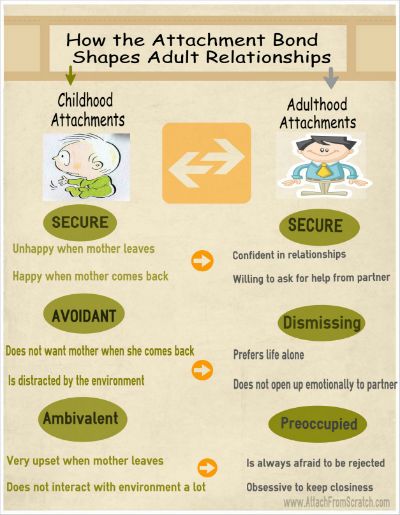 If contact and intimacy are not available, then a set of behavioral responses emerge to get attention and keep the connection: clinging, screaming, crying, constantly demanding a bottle or breast, sleep refusal, increased anxiety, inability to relax, aggressive behavior, tantrums. Psychological development in this case is inhibited. In severe cases, physical development is also inhibited. For example, children in orphanages are physically much less developed than their peers, although they have all the necessary living conditions.
If contact and intimacy are not available, then a set of behavioral responses emerge to get attention and keep the connection: clinging, screaming, crying, constantly demanding a bottle or breast, sleep refusal, increased anxiety, inability to relax, aggressive behavior, tantrums. Psychological development in this case is inhibited. In severe cases, physical development is also inhibited. For example, children in orphanages are physically much less developed than their peers, although they have all the necessary living conditions.
At the same time, it must be remembered that the mother's accessibility is considered not only in the physical, but also in the psychological sense. Along with physical closeness, the emotional involvement of the mother in the relationship is very important for the child: an affectionate look, tenderness.
This idea was confirmed by the "stone face" experiment. The experiment involved babies up to a year old with their mothers. In the first part of the experiment, the mother is asked to communicate with her child, to be active, to respond to his signals.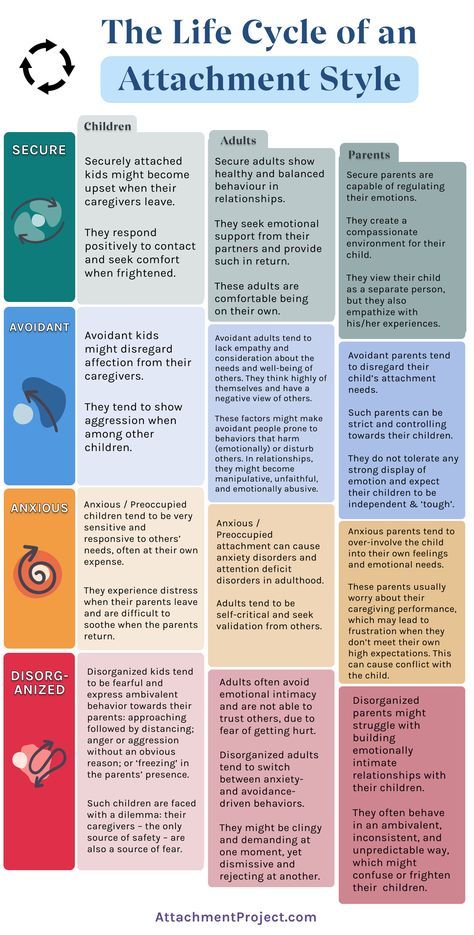 Then Mom turns away, then turns with a stony, motionless face. Very quickly, literally three minutes does not pass, as we see the reaction of the baby: at first he is at a loss, thinks that this is a joke, tries to cheer up his mother, takes some action. If the mother's face does not change, then after a while the baby begins to react violently, stress is visible on his face. This is a clear illustration of how anxiety arises when a person is separated from his attachments.
Then Mom turns away, then turns with a stony, motionless face. Very quickly, literally three minutes does not pass, as we see the reaction of the baby: at first he is at a loss, thinks that this is a joke, tries to cheer up his mother, takes some action. If the mother's face does not change, then after a while the baby begins to react violently, stress is visible on his face. This is a clear illustration of how anxiety arises when a person is separated from his attachments.
In order for the baby to experience closeness with his mother as reliable and safe, we try to be present in his life in one way or another.
Generosity attitude
What else do we need to know? Remember when I said that a secure relationship is not just about attachment, but about being in the right position in the hierarchy? The kid cannot ensure the reliability of the relationship with his own efforts. As soon as he begins to "work" on relationships, they instantly become unreliable.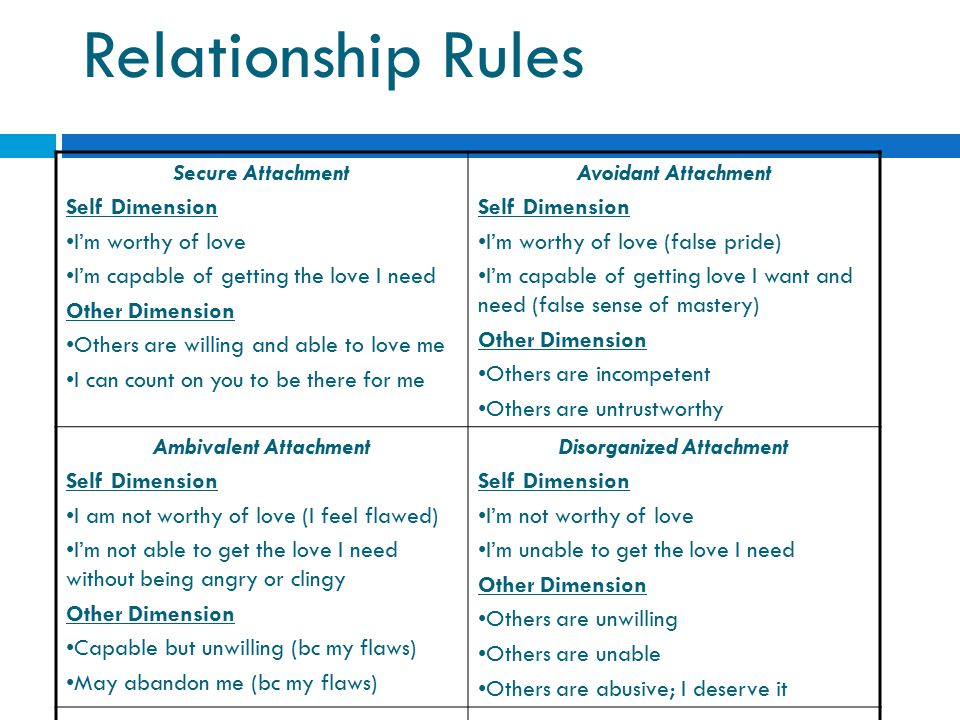 This applies not only to small children, but also to adults.
This applies not only to small children, but also to adults.
It is important to give more intimacy than is needed for a simple response to a request. To do this, we approach the child first: we do not wait until he holds out his hands to us, we ourselves take him in our arms. It's like when you hope for a little flower from your lover, and he brings a whole bouquet: here you feel full and relaxed.
Attachment is often compared to food: I don't have to fight, I can eat something tasty and it won't go away from me.
We take on the role of leader rather than waiting for the child to demand from us. We don't expect a child to do the right thing to show him our love and invite him into our lives. In English, the word 9 is used0083 trump , when a non-trump ace can be covered with a trump six. So, we must beat like a trump card: the child expects a little, but we give a lot and do not wait until he asks.
We are not waiting for any alarm: now we have play time, and now we have massage time.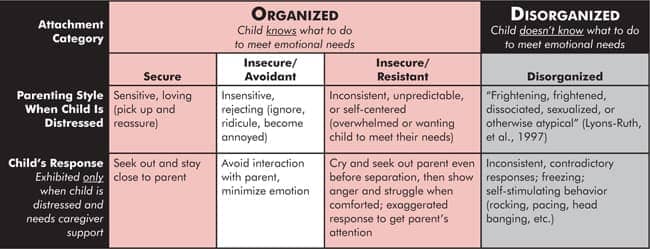 No. All the time we try to give more. Passing by a playing baby, kiss him, hug him. Find within yourself the source of generosity and generosity. Try several times a day to enjoy the moments of communication with the baby with all your being. Time is very fleeting, the baby will never be 6 or 8 months old. Try to nourish yourself with this intimacy with your child.
No. All the time we try to give more. Passing by a playing baby, kiss him, hug him. Find within yourself the source of generosity and generosity. Try several times a day to enjoy the moments of communication with the baby with all your being. Time is very fleeting, the baby will never be 6 or 8 months old. Try to nourish yourself with this intimacy with your child.
Hierarchy in attachment is natural
Hierarchy in attachment is natural, and its establishment does not require any sophisticated efforts from us. When a child is born, the woman who gave birth naturally takes the right position in the hierarchy with the child, and the task of loved ones is to support her in this.
In addition to relatives, I would like to turn to specialists in helping professions, because phrases like “I am a specialist, I know what is right, and you must obey me” make a woman dependent on experts and dull her natural alpha instincts. Therefore, it is important to help in consultations, to give tools.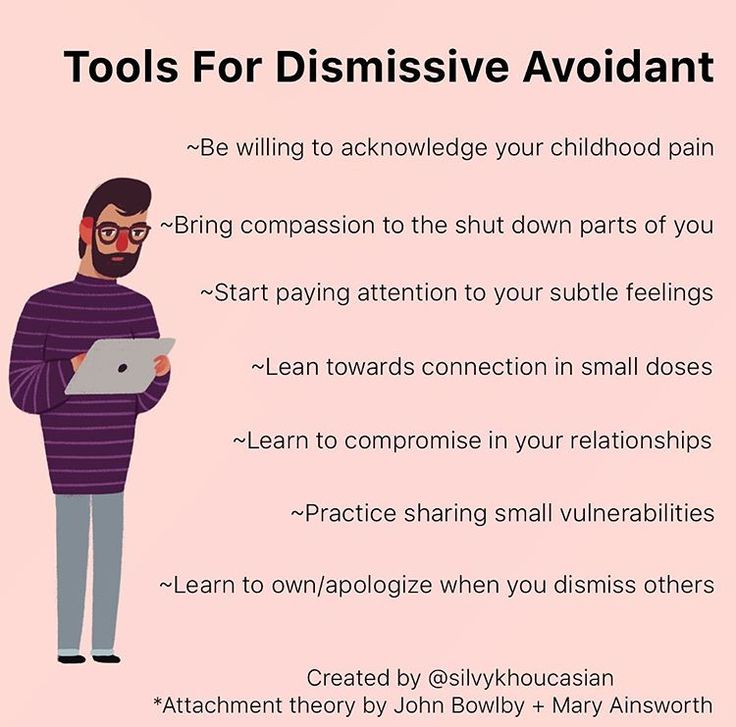
 Her passion is working with families as a health and wellness educator to build skills that support compassionate families and all the important dynamics within it. She has two children and lives in Santa Fe, NM.
Her passion is working with families as a health and wellness educator to build skills that support compassionate families and all the important dynamics within it. She has two children and lives in Santa Fe, NM.

